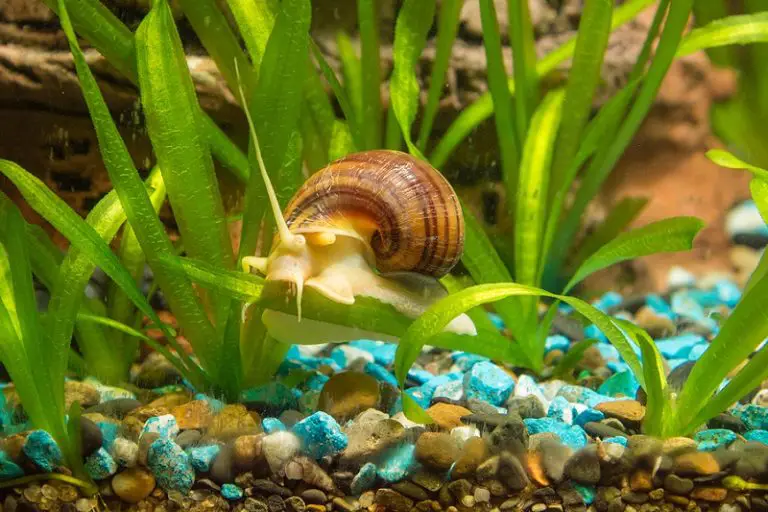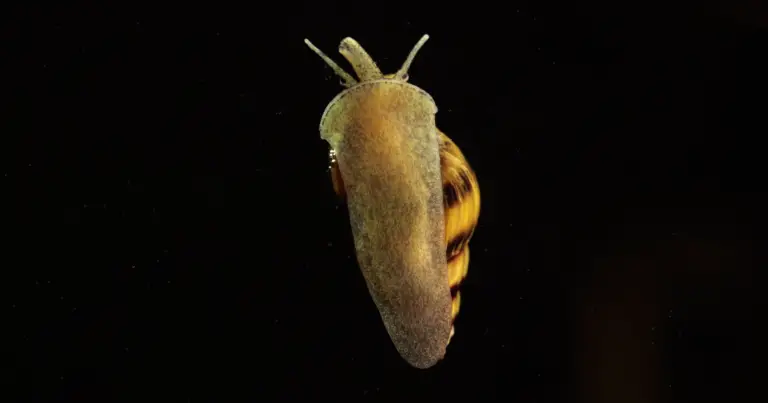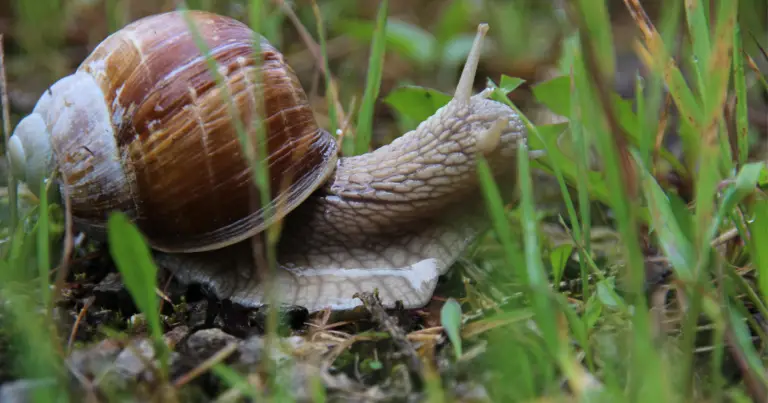How Many Snails Per Gallon?
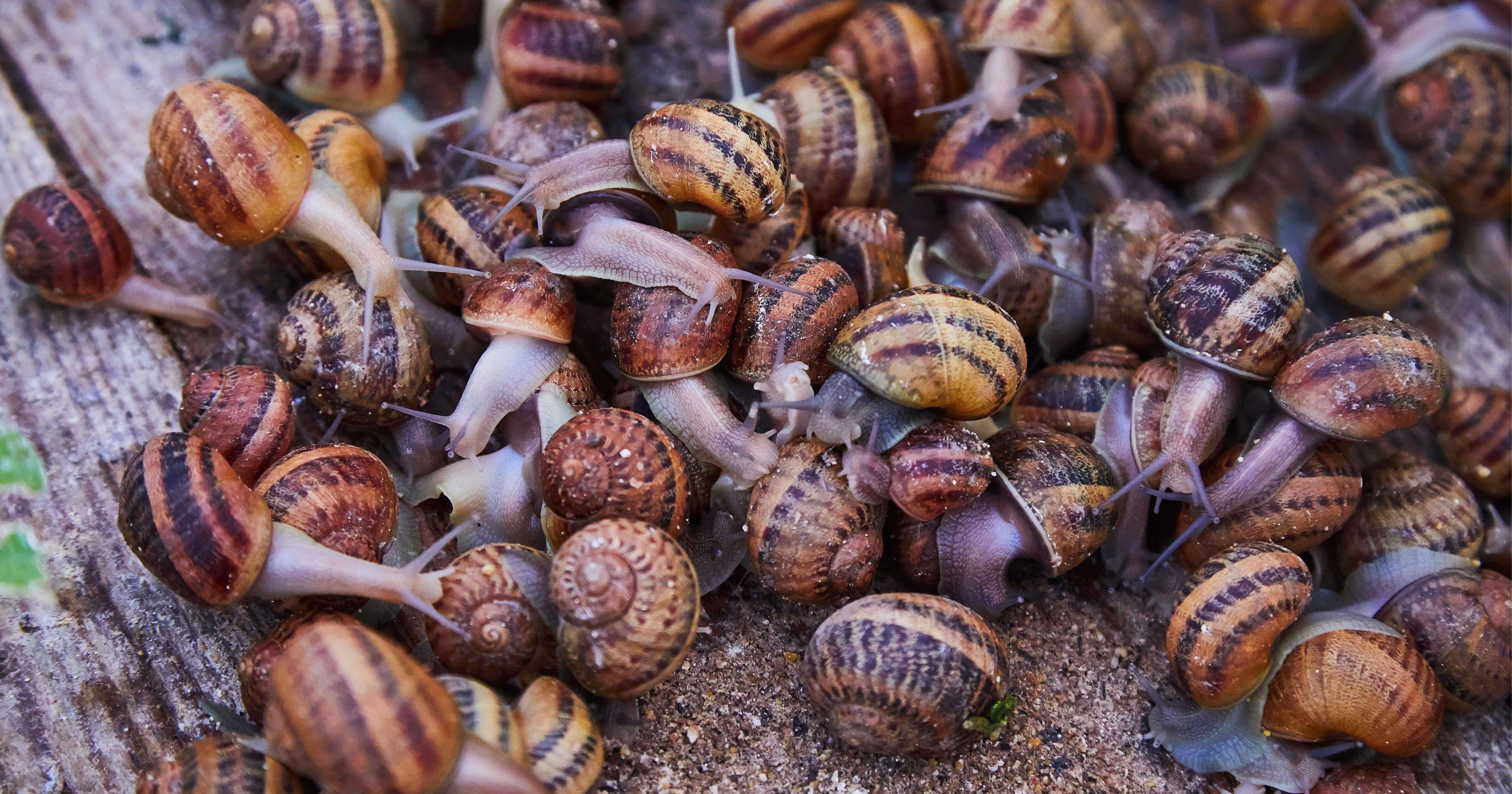
When considering adding snails to your aquarium, knowing how many snails per gallon you can comfortably house is important. Overcrowding can lead to various issues and negatively impact the health of your snails and the overall tank ecosystem. Finding the right balance is crucial so your snails have adequate space to move and thrive.
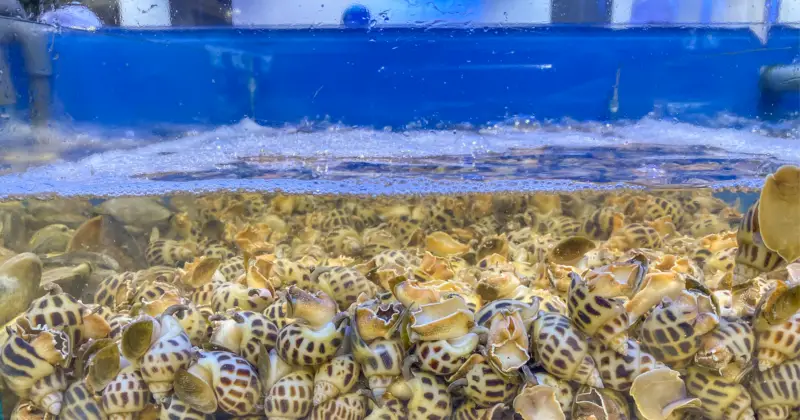
The optimal number of snails per gallon varies depending on the snail species. It’s recommended to keep 1-2 snails per 5 gallons for mystery snails, while for nerite snails, 4 snails are enough for a 20-gallon tank. On average, you should aim for one small snail per gallon or two larger snails per 5 gallons to ensure they have enough space to grow and thrive.
By understanding the specific requirements of your snails and providing them with ample space, you help maintain a healthy and balanced aquarium. Be sure to research the specific snail species you are interested in, as their needs may differ, and consider the tank size and compatibility with other tank inhabitants before adding snails to your aquatic environment.
Contents
Table of Contents
Understanding Snails Per Gallon

When setting up an aquarium, it’s essential to know the appropriate number of snails to introduce based on the tank’s size. The number of snails per gallon depends on factors such as tank size, species of snail, and available resources.
For a general guideline, one snail can be housed per gallon of water when dealing with small snails. However, bigger snails like mystery snails should follow a ratio of 1 snail per 5 gallons of water. You can scale the ratio to one snail per gallon for saltwater aquariums.
Certain species may require a specific snail-to-gallon ratio.
For instance, in a 5-gallon tank, one nerite or rabbit snail would be sufficient, while you can keep cerith snails in groups of 3. It’s essential to be aware of the specific needs of your chosen snail species to provide adequate space for their well-being.
Remember that overstocking snails may lead to poor water quality and an imbalanced ecosystem; thus, maintaining the appropriate snail-to-gallon ratio is crucial. Along with adhering to the suggested ratios, you should also monitor the water parameters and filtration system to ensure a healthy environment for your snails.
To summarize, the appropriate number of snails per gallon is based on the tank size, Snail species, and the ecosystem’s overall health. Following the recommended guidelines and halting overcrowding can promote a thriving aquatic environment for your little gastropods.
Different Types of Snails

Mystery Snails
Mystery snails are a popular choice for freshwater aquariums. They help keep your tank clean by consuming algae and organic debris. With a size of around 2 inches, you can follow the general rule of one snail per gallon for smaller snails or two snails per five gallons for larger ones.
Nerite Snails
Nerite snails are among the most efficient algae eaters, making them a popular choice for freshwater and saltwater aquariums. They are small, growing up to 1 inch, which allows you to keep more of them in your tank. Stick to the guidelines mentioned above to maintain an appropriate snail-to-gallon ratio.
Rabbit Snails
Rabbit snails are an interesting addition to freshwater tanks, known for their unique appearance and slow movement. While they can grow up to 4 inches, it’s crucial to maintain an adequate amount per gallon, as they produce more waste than other snail species.
Apple Snails
Apple snails are among the largest freshwater snails, growing up to 5 inches in diameter. Due to their size, keeping no more than 2 snails in a 5-gallon tank is essential, ensuring adequate space for them to thrive.
Horned Nerite Snails
Horned nerite snails are a smaller variation of nerite snails, featuring distinctive “horns” on their shells. As they are only around 1 inch in size, they can be comfortably added to aquariums with other snail species. Remember to follow the standard guideline of 1 to 2 tiny snails per 5 gallons of water.
Tiger Nerite Snails
Tiger nerite snails are characterized by unique striped patterns, resembling tiger stripes. Like other nerite snails, these freshwater invertebrates grow up to 1 inch and are excellent algae eaters.
Cerith Snails
Cerith snails, primarily found in saltwater aquariums, are known for their ability to dig through the substrate, helping aerate it and remove detritus. As they only grow up to about 1.5 inches, you can maintain a higher snail-to-gallon ratio with these little workers.
Turbo Snails
Turbo snails are popular among reef hobbyists for their impressive algae-eating abilities and interesting shell shapes. With a size of up to 3 inches, their snail-to-gallon ratio should be adjusted accordingly for reef tanks.
Ramshorn Snails
Ramshorn snails are unique for their flat, spiral-shaped shells and can be found in various colors. As a small freshwater snail species, they can be an excellent addition to your aquarium, keeping algae levels under control.
Aquatic Snails
Aquatic snails refer to any snails that live primarily underwater. Remember that various species have different requirements, and always research the specific snail type you’re interested in to ensure proper care and an appropriate snail-to-gallon ratio.
Olive Nerite Snails
Olive nerite snails are another variant of the nerite snails, featuring olive-green shells. They share the same traits as their nerite cousins, making them a valuable addition to maintaining a clean, healthy aquarium environment.
Trochus Snails
Trochus snails are versatile algae eaters, consuming diatoms and cyanobacteria, making them ideal for mixed reef aquariums. These marine snails can grow up to 1.5 inches, so ensure tank size is suitable while maintaining an appropriate snail-to-gallon ratio.
Malaysian Trumpet Snails
Malaysian trumpet snails are known for their unique shape and nocturnal nature. These freshwater burrowers grow up to 1 inch and are a helpful addition to keeping the substrate in your aquarium clean and aerated, benefiting plant roots and water quality.
Assassin Snails
As the name suggests, Assassin snails prey on other snails, making them an effective method of controlling unwanted snail populations in freshwater aquariums. However, be cautious when keeping them with other snails, as they may also target beneficial snail species.
Astrea Snails
Astrea snails are popular for their beautiful conical shells and algae-eating habits in marine aquariums. With a small size of up to 1 inch, they play an essential role in helping maintain a clean and healthy reef environment.
Mexican Turbo Snails
Mexican turbo snails, just like other turbo snails, are marine snails known for their powerful algae-eating abilities. As they can grow up to 3 inches, always consider their snail-to-gallon ratio to avoid overcrowding.
It’s essential to consider the types of snails and their specific needs when determining how many snails per gallon you should have in your aquarium. Always research and adjust according to individual species to ensure a healthy, thriving aquatic environment.
Snail’s Habitat Requirements
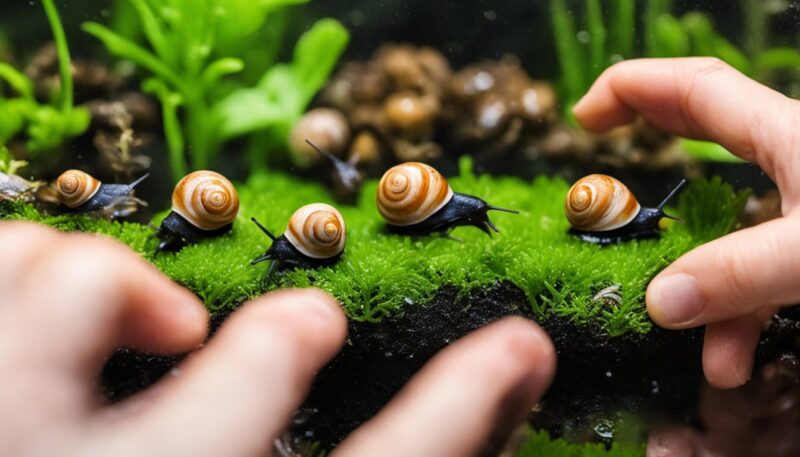
Tank Size and Gallon Requirements
When setting up a habitat for your snails, consider the tank size and their gallon requirements. Since different species of snails vary in size, so do their space needs. Generally, for mystery snails, maintain a ratio of 1 snail per 5 gallons (19 liters) of water.
In a 5-gallon aquarium, one nerite or rabbit snail is sufficient, while cerith snails can be kept in groups of 3. For saltwater tanks, the general guideline is to have one snail per gallon and scale up accordingly.
It’s important not to overcrowd the tank as snails produce waste that can build up. Generally, no more than 1-2 snails per 5-gallon habitat is considered adequate for most freshwater tanks. Remember that the tank size determines the number of snails you can keep and the type of snail, as some species, like the apple snail, grow much larger than horned nerite snails.
Water Parameters
Besides tank size, the water parameters are crucial in maintaining a healthy habitat for your snails. The ideal water parameters for snails include:
- Temperature: Freshwater snails generally prefer water temperatures between 68 and 82 degrees Fahrenheit (20-28 degrees Celsius).
- pH: The optimal pH ranges from 7.0 to 7.5 for most snails, with alkaline water (higher pH) especially important for those with a calcium-based shell.
- Hardness: Snails require a certain level of hardness in the water to maintain the health of their shells. Aim for a dGH (general hardness) of at least 4 and up to 18, depending on the species.
- Substrate: A soft, sandy substrate will protect snails’ delicate undersides, especially for burrowing species, while smooth gravel is a suitable alternative for other snails.
Regularly monitor and test the water in your tank to ensure the parameters are within the acceptable ranges for your snail species. Adjusting the water parameters will help promote optimal health and prevent potential issues, like shell deterioration or sluggish behavior.
How to Care for Pet Snails! Watch this
Feeding and Nutrition
Feeding Habits
Your snails will typically feed at night or during the early morning hours. They enjoy feasting on various materials, such as algae, biofilm, and vegetables. Snails are generally very efficient at cleaning your aquarium by eating leftover food, decaying plant matter, and various types of algae.
Dietary Requirements
To ensure your snails stay healthy and well-fed, providing them with a balanced diet that meets their nutritional needs is essential. In addition to algae and biofilm, which your snails naturally find in the aquarium, you may offer them a variety of vegetables, such as:
- Spinach
- Lettuce
- Cucumber
- Kale
- Zucchini
You can blanch the vegetables by briefly boiling them and immersing them in cold water. This softens the vegetables, making them easier for your snails to consume. Be sure to remove any uneaten vegetables from the tank after 24 hours to prevent them from decaying.
In addition to vegetables, you can offer your snails commercial snail food, available in different forms:
- Sinking pellets: These pellets are designed to sink to the bottom of the tank, ensuring your snails can easily access the food.
- Flakes: While most commonly associated with fish, snail-friendly flakes are available and can be a nutritious alternative to sinking pellets.
- Algae wafers: These specially formulated wafers promote healthy algae growth, providing your snails with a natural food source.
By providing your snails with a diverse and balanced diet, you’ll keep them healthy and ensure that they thrive in your aquarium. Remember to monitor their eating habits and adjust their diet to accommodate their preferences and maintain optimal water quality.
Breeding and Reproduction
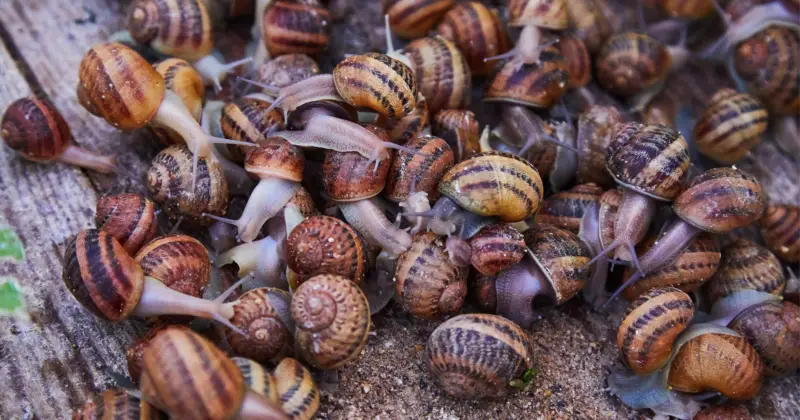
Regarding breeding and reproduction in snails, it’s important to know a few key aspects about their gender and mating habits. Snails are hermaphrodites, meaning they possess both male and female reproductive organs. However, some species, like the Mystery Snail, have distinct male and female individuals.
Understanding the reproduction process can help you maintain a healthy population and environment in your aquarium. To encourage snail breeding, create a conducive environment by providing optimal water conditions, adequate food, and hiding spots.
Egg-laying and Incubation
Once the snails mate, females typically lay eggs in a gelatinous mass above the waterline. Ensure your aquarium has enough space above the water for this process. Depending on the species, incubation periods can vary. For example, Mystery snail eggs hatch within 2 to 3 weeks. Maintaining consistent water temperature and humidity levels during incubation is crucial for healthy growth.
Population Control
As snails reproduce, it is crucial to prevent overcrowding in your tank which can cause poor water quality and an imbalanced ecosystem. Follow a general guideline of one snail per gallon for tiny snails and two snails per five gallons for bigger snails. For Mystery snails, aim for one snail per 5 gallons; for saltwater tanks, try to maintain one snail per gallon.
Remember, too many snails can stress the existing tank inhabitants and newcomers. It is essential to monitor the snail population and adjust it to maintain a thriving aquatic environment.
Dealing with Overcrowding

Snail Population Control
Overcrowding in your aquarium can cause problems such as poor water quality and an imbalanced ecosystem, so keeping your snail population in check is crucial. By understanding the ideal ratio of snails per gallon, you can maintain a healthy and sustainable environment for your aquatic friends.
When considering your snail population, consider the type of snails in your tank. For instance, a good rule of thumb with tiger nerite snails is having one snail per gallon for smaller tanks. However, as your tank size increases, the ratio may change to accommodate more snails without causing overcrowding.
To further control snail populations in your aquarium, consider implementing the following strategies:
- Manual removal: Periodically check your tank for an excessive number of snails and remove some if necessary. Be sure to watch for snail eggs, as removing them can help prevent future overcrowding.
- Limit food sources: Snails often reproduce when food is abundant, so ensure you are not overfeeding your fish or providing too many algae wafers for the snails.
- Introduce snail predators: Introducing fish or invertebrates that prey on snails can help control their population. However, be cautious, as these predators may also eat your desired snails or other tank inhabitants.
By managing your snail population effectively, you can avoid overcrowding and maintain a pleasant and healthy environment for your snails and other aquatic life. Always use your best judgment when determining the proper number of snails per gallon for your tank, ensuring all inhabitants have adequate space and resources to thrive.
Health and Disease
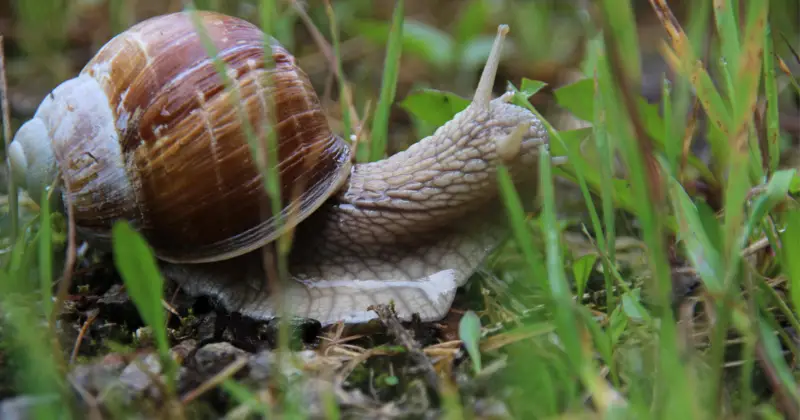
Keeping the proper number of snails per gallon is important for maintaining their health and preventing diseases within your aquarium. Overcrowding can lead to stress, unhealthy conditions, and the spread of disease among your snails.
Maintaining a clean and stable environment for your snails helps ensure they are less susceptible to illness. Regular water changes are essential for reducing the risk of disease. It’s generally recommended to perform water changes of 10–20% of your aquarium’s volume every week or two, depending on the tank’s size and the number of snails in it.
Water changes help remove waste and promote balanced water chemistry, which is important as deteriorating water conditions can cause diseases to develop. Besides water changes, monitor your water parameters regularly to ensure your snails have the right environment to thrive in.
Factors like pH, temperature, ammonia, nitrite, and nitrate levels should be checked regularly and within the appropriate range.
Another important aspect to consider is the compatibility of different snail species. Mixing snail species that are incompatible with each other can lead to stress, especially if there’s competition for food and space. Knowledgeable pairings can maintain harmony in your aquarium and prevent the development of health issues.
While taking precautionary measures to maintain a healthy aquarium environment is ideal, sometimes illness can still occur. If you notice any unusual behavior or appearance in your snails, such as inactivity, loss of appetite, or damage to their shells, it’s important to address the issue quickly. Identifying the cause, isolating sick snails, and seeking advice from an expert can help treat and prevent the spread of disease to other inhabitants in your aquarium.
In summary, managing the number of snails per gallon, performing regular water changes, monitoring water parameters, and ensuring compatibility between species are essential to maintaining a healthy, disease-free environment for your snails. By following these guidelines, your aquarium inhabitants will have the best chance at remaining healthy and thriving.
The Verdict: How Many Snails Per Gallon

In your aquarium, the number of snails per gallon can depend on factors like the size and species of the snails and the size of your tank. To provide your snails with a comfortable environment, consider starting with 1 to 2 tiny snails per 5 gallons of water.
For certain species, such as mystery snails, it is advised to maintain a ratio of 1 snail per 5 gallons of water. Saltwater tanks, on the other hand, generally require one snail per gallon. Other common snails, like nerite snails, also do well at a proportion of 1 snail per 5 gallons.
Remember that overstocking may lead to poor water quality and an imbalanced ecosystem. Always ensure that your snails have enough space to move around while avoiding overcrowding in the tank. In the end, maintaining a healthy ecosystem in your aquarium will enable your snails to thrive and lead a happy life.
Frequently Asked Questions
How many freshwater snails for a 1-gallon tank?
In a 1-gallon tank, it is recommended to have only one small snail, such as a horned nerite snail. An overcrowded tank can lead to poor water quality and stress for your snail.
What is the recommended number of mystery snails for a 10-gallon tank?
For a 10-gallon tank, you can comfortably house 2-4 mystery snails. To calculate the ideal number, divide the tank’s gallon capacity by 5 and then multiply the result by 2.
How many Nerite snails are suitable per gallon?
One nerite snail should be suitable for each 5-gallon tank size. So, if you have a 5-gallon aquarium, one nerite snail would be enough, and for a 10-gallon tank, two nerite snails would be appropriate.
What’s the appropriate number of land snails per gallon?
This information refers to aquatic snails and not land snails. Land snails have different requirements, and the ideal number of snails per gallon doesn’t apply to them. Please refer to land snail care guides for proper housing and maintenance.
How many snails can live in a 5-gallon tank with a betta?
In a 5-gallon tank with a betta, you can comfortably house one small snail, such as a horned nerite or a single mystery snail. Ensure the snail has enough hiding space, as bettas can sometimes show aggressive behavior towards tankmates.
What is the Ideal snail count for a 3-gallon tank?
For a 3-gallon tank, it is recommended to have one small snail, like a horned nerite snail or a single mystery snail. Avoid overcrowding, which could negatively impact your snail’s living conditions and overall health.


